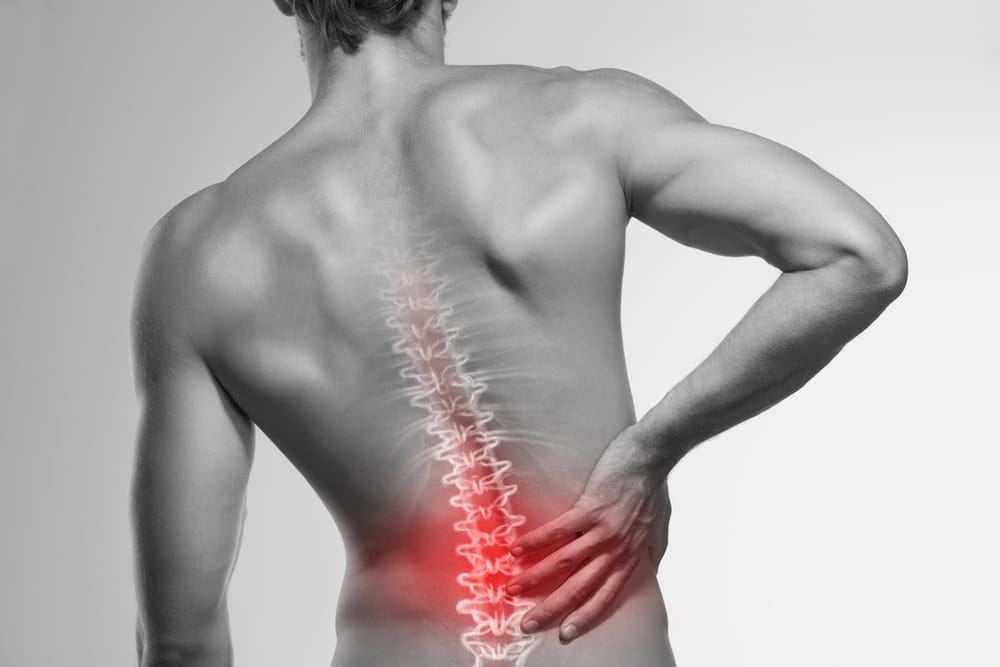This post is also available in:
Tiếng Việt (Vietnamese)

Definition
What is lower back pain?
Pain in lower back – lumbar region is a common issue of human. It is the most common cause of job-related disability and a major reason for missed work. While most back twinges go away on their own after a few days, many people suffer from chronic back pain.
How common is lower back pain?
This health condition is extremely common. It can affect patients at any age. It can be managed by reducing your risk factors. Please discuss with your doctor for further information.
Symptoms
What are the symptoms of lower back pain?
The common symptoms of lower back pain are:
- Pain in the part of the back between the ribs and the legs;
- Difficulty moving;
- Local soreness upon touch;
- More painful after long periods of standing or sitting.
There may be some symptoms not listed above. If you have any concerns about a symptom, please consult your doctor.
When should I see my doctor?
You should contact your doctor if you have any of the following:
- Fever and chills;
- Unexplained recent weight loss;
- Significant leg weakness;
- Suddenly difficulty passing urine or bowel movement;
- Severe, persistent abdominal pain.
Causes
What causes lower back pain?
- A back muscle strain or ligament is one of the most common causes of acute lower back pain.
- Wrong position of working such as suddenly lifting a heavy object or twisting.
- Some health conditions: intervertebral disc degeneration, herniated or ruptured discs.
Risk factors
What increases my risk for lower back pain?
There are many risk factors for lower back pain, such as:
- Age: people who age from 30 to 60 are more likely to experience lower back pain.
- Inactive lifestyle: back pain is more common among people who are not physically fit. Weak back and abdominal muscles may not properly support the spine.
- Pregnancy is commonly accompanied by low back pain, which results from pelvic changes and alterations in weight loading. Back symptoms almost always resolve postpartum.
- Weight gain: being overweight, obese, or quickly gaining significant amounts of weight can put stress on the back and lead to low back pain.
- Genetics: some causes of back pain, such as ankylosing spondylitis, a form of arthritis that involves fusion of the spinal joints leading to some immobility of the spine, have a genetic component.
- Occupational risk factors: having a job that requires heavy lifting, pushing, or pulling, particularly when it involves twisting or vibrating the spine, can lead to injury and back pain. An inactive job or a desk job may also lead to or contribute to pain, especially if you have poor posture or sit all day in a chair with inadequate back support.
Diagnosis & treatment
The information provided is not a substitute for any medical advice. ALWAYS consult with your doctor for more information.
How is lower back pain diagnosed?
Your doctor will ask about medical history and do the physical exam to identify the serious conditions that may be causing the pain.
Along with a thorough back examination, neurologic tests are conducted to determine the cause of pain and appropriate treatment.
In some case, imaging tests are required to rule out specific causes of pain, including tumors and spinal stenosis, including X-ray, CT, MRI, Bone scans or blood tests.
How is lower back pain treated?
Treatment for low back pain generally depends on whether the pain is acute or chronic.
- Physical therapy programs to strengthen core muscle groups that support the low back, improve mobility and flexibility, and promote proper positioning and posture are often used in combinations with other interventions.
- Spinal manipulation and spinal mobilization.
- Acupuncture.
- Nerve block therapies.
- Medications: acetaminophen, ibuprofen, ketoprofen, anticonvulsants, antidepressants.
- Surgery.
See more: Human papillomavirus (hpv)
Lifestyle changes & home remedies
What are some lifestyle changes or home remedies that can help me manage lower back pain?
The following lifestyles and home remedies might help you cope with lower back pain:
- Always stretch before exercise or other strenuous physical activity.
- Don’t slouch when standing or sitting.
- At home or work, make sure work surfaces are at a comfortable height.
- Sit in a chair with good lumbar support and proper position and height for the task. Keep shoulders back.
- Switch sitting positions often and periodically walk around the office or gently stretch muscles to relieve tension.
- Wear comfortable, low-heeled shoes.
- Don’t try to lift objects that are too heavy.
- Do not twist when lifting.
- Healthy diet with sufficient daily intake of calcium, phosphorus, and vitamin
- Quit smoking.
If you have any questions, please consult with your doctor to better understand the best solution for you.
Sources:

